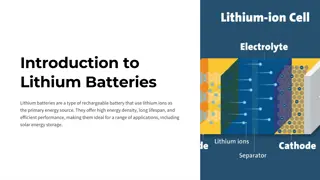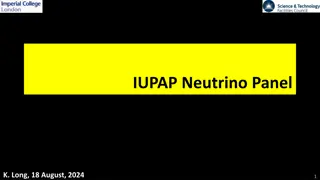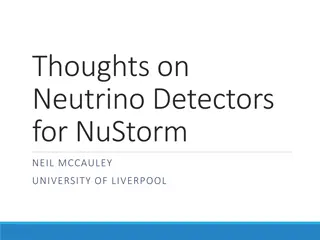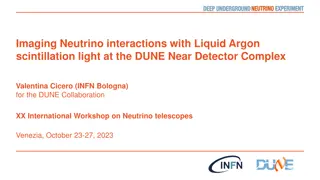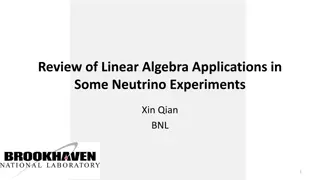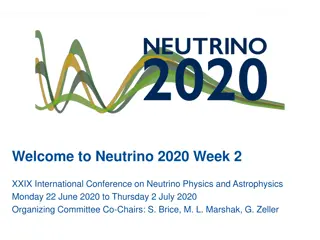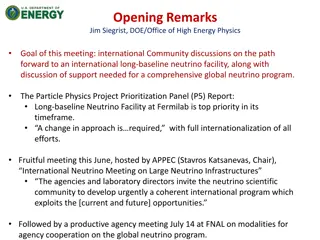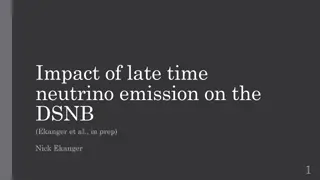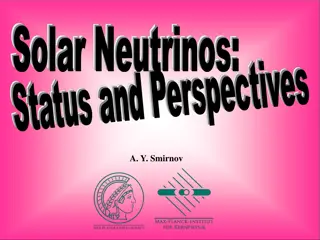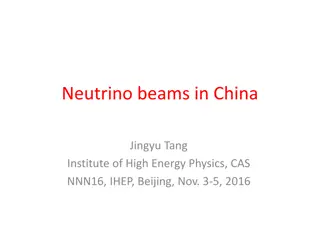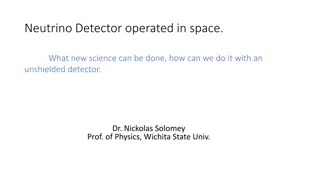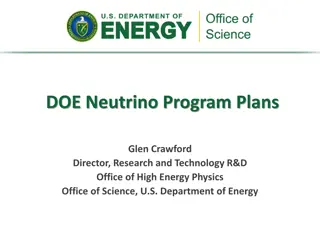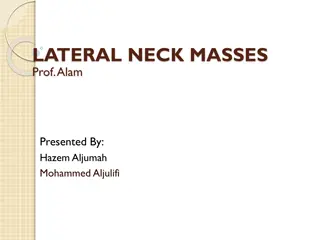SNO+ Neck Analysis: Solar Neutrino Detection & Event Reconstruction
Uncover insights from the SNO+ detector's neck analysis, focusing on solar neutrino detections and event reconstruction to address false positive sources and anomalies in data. Explore the motivation behind uniform event distribution and the impact of Polonium-210 events within the acrylic vessel. Dive into the probability of event misclassification and the normalization of surface area for precise analysis.
Download Presentation

Please find below an Image/Link to download the presentation.
The content on the website is provided AS IS for your information and personal use only. It may not be sold, licensed, or shared on other websites without obtaining consent from the author.If you encounter any issues during the download, it is possible that the publisher has removed the file from their server.
You are allowed to download the files provided on this website for personal or commercial use, subject to the condition that they are used lawfully. All files are the property of their respective owners.
The content on the website is provided AS IS for your information and personal use only. It may not be sold, licensed, or shared on other websites without obtaining consent from the author.
E N D
Presentation Transcript
SNO+ Neck Analysis Yuan (Nelson) Zhou DATTEE 1
SNO+ Detector Solar Neutrino Detections Aprox. 10,000 Photo Multiplier Tubes (PMTs) Acrylic Vessel (6m radius) PMT Support Structure, PSUP (8.5m radius) Neck (14.72m) 4 Neck PMTs Linear Alkyl Benzene (LAB) 2
Motivation Reconstruction of Po-210 and C14 events should be uniform, 60- 1800nhits Extra concentration at center for Neck hits > 0 (Existing Neck Cut Filtering Plot) Mis-reconstruction of events in the middle of detector in simulation Accounting for unaccounted neck events and pile up events 4
List of Potential Sources of Problem False positive (Events WITHIN AV vessel firing Neck PMT) Backgrounds inside the Neck (Polonium-210) Neck PMT noise coincident with scintillator background events 5
465,951 events (in one run) out of total events are registered as neck events (necknhit > 0) Magnitude of Neck Events 129.4Hz of neck events 6
Geometric Method Probability of seeing a center event being registered as a neck event Neck Radius Region (0.6855m radius) Total entries: 12950 Entries with neck hits: 9465 73.1% entries have neck hits 8
Geometric Method 9
Neck Acrylic Polonium-210 70 to 200 nhits region 5.6 to 6 meters 194,647 Events in that region Graph from Ryan Bayes (Document 8399-v1) 11
Normalizing Surface Area and Run Time (1 hour) 0.1195 bq/m^2 Previous: 2.1 bq/m^2, Nhits from 60 -150, 5.5m to 6m (From Acrylic vessel Po210 scintillator events analysis, ShengZhao Yu, 2021) 12
Neck Acrylic Rate Applied 0.1195 bq/m^2 to the surface area of the side wall of the neck Returned rate of 4.1176 bq 13
Neck PMTs Coincident Pile Ups One or more Neck PMTs Firing on its own, at the same time with C14 or Polonium-210 event Detector collects data in a period of 300ns window following by a dead time Generated random time stamps within a second, see how many times one or more Neck PMT event occurs in the same window with an event 15
Coincident Result Probability of 1.005e-4 % Apply to overall detector trigger rate of 2000Hz: 2.01e-3Hz 16
Next Step Unshielded area of 42in of scintillator above PSUP Events due to gamma exposure Surface areas exposed is 7.547m2, in a cylindrical shape UG Potassium-40 alone has a count density of 10e4 Counts/s m2 when applied to the area, 75,470Hz of events are generated. 18
BIG THANK YOU Alex Wright and Christine Kraus Ryan Bayes 19





